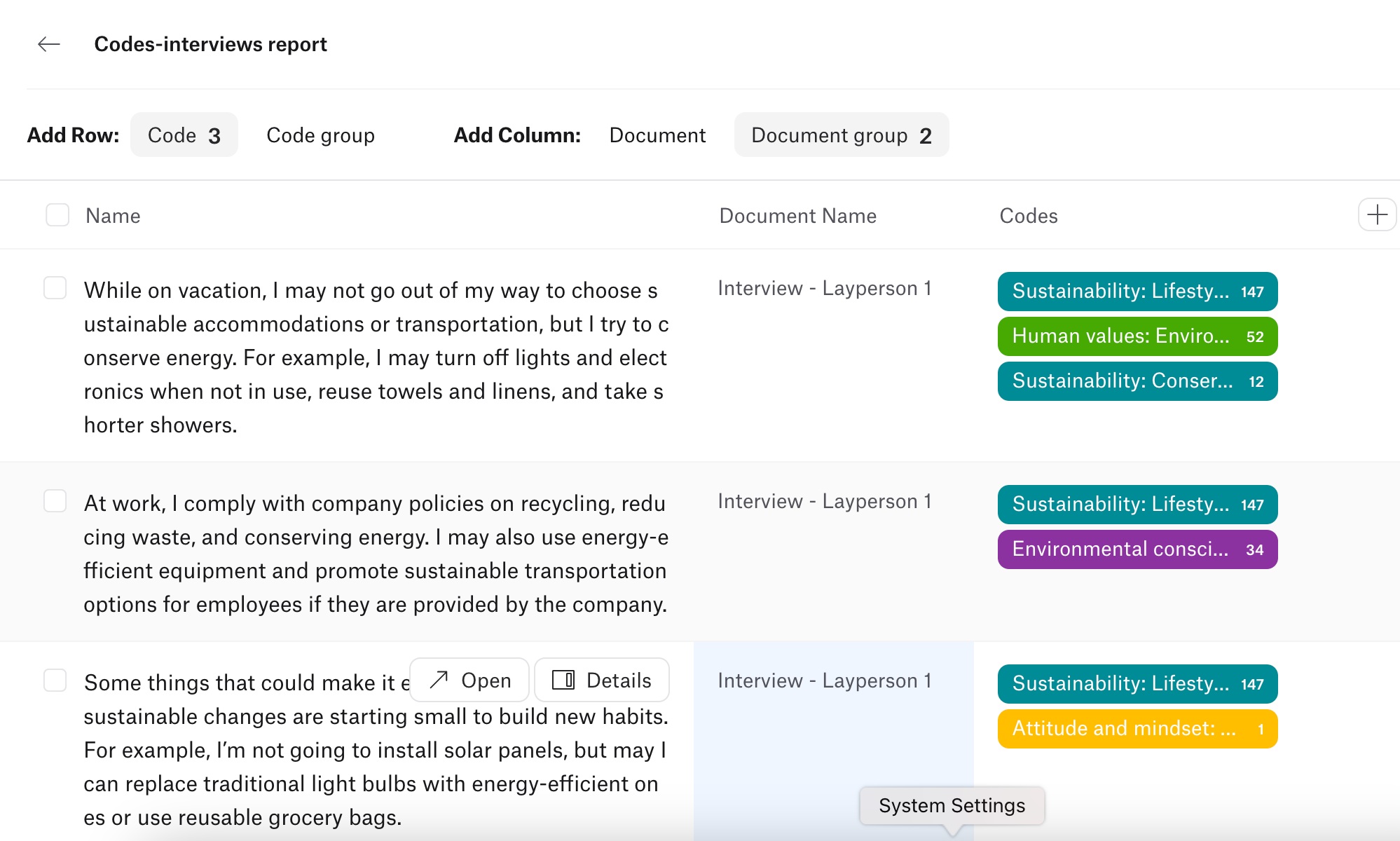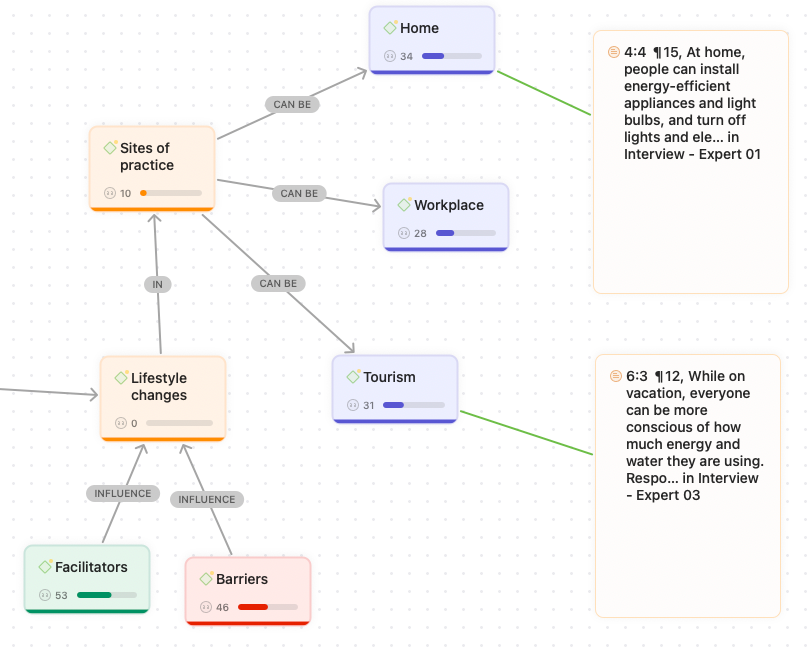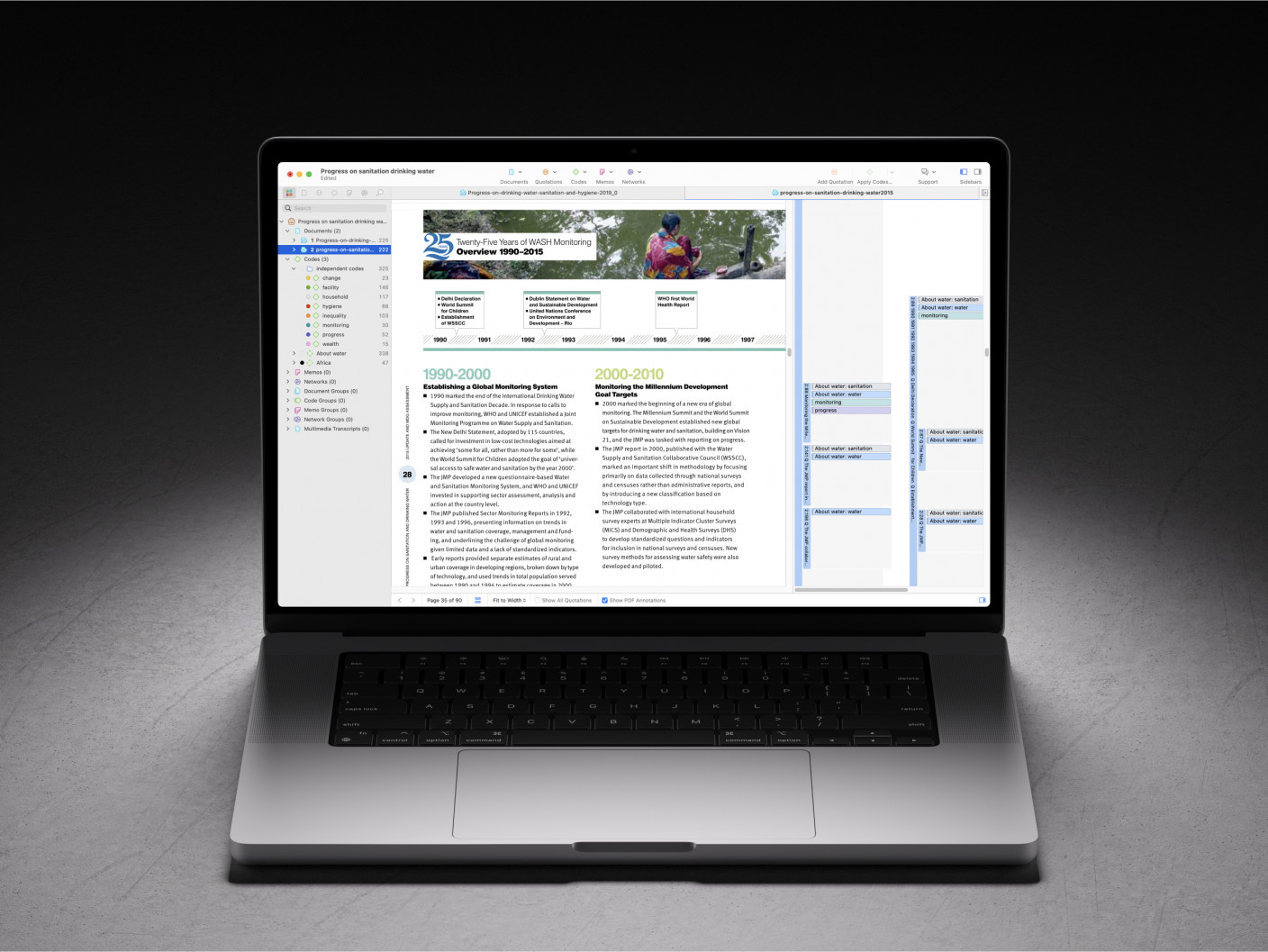Rhizome Analysis | Definition, Methods & Applications
- Introduction
- What is rhizome theory?
- What are the key points of rhizomes?
- What is rhizome analysis?
- What are the advantages of rhizome analysis?
- Coding in rhizome analysis
- Further reading
Introduction
Rhizome analysis is a qualitative research method inspired by the concept of the rhizome, which represents non-linear and interconnected pathways. This approach challenges traditional hierarchical models and binary thinking by embracing complexity and multiplicity in data interpretation. This article examines the foundations of rhizome theory, outlines its key principles, and explains how rhizome analysis is applied in qualitative research. It also discusses the advantages of this method and provides insights into coding practices within rhizome analysis. By adopting this perspective, researchers can explore complex phenomena through a lens that values diversity and interconnectedness.

What is rhizome theory?
Rhizome theory originates from the work of philosophers Gilles Deleuze and Félix Guattari, particularly in their 1980 book A Thousand Plateaus (1987 in English). Deleuze and Guattari argue for rhizomatic thinking by using the botanical concept of a rhizome—a type of plant stem whose growth trajectory is horizontal as it sends out roots underground and shoots—to illustrate ideas about non-linear and non-hierarchical structures. Unlike traditional models that resemble a tree with a clear starting point and branching paths, a rhizome spreads in multiple directions with no singular origin or central axis. Under this philosophy, knowledge and ideas are seen as interconnected and constantly in flux. Any point of a rhizome can be connected to any other point, allowing for multiple, simultaneous entry and exit points in understanding a concept or phenomenon. This challenges conventional hierarchical models that prioritize certain perspectives over others and that follow a linear progression.

Rhizome theory emphasizes the importance of multiplicity, diversity, and the rejection of rigid structures. It suggests that subjects should be approached through a network of connections rather than through isolated categories. This perspective allows for a more dynamic and holistic understanding of complex systems, acknowledging that elements are interrelated in ways that traditional models might overlook. The theory has been influential across various disciplines, including sociology, cultural studies, and education. It offers a lens through which to examine phenomena that are too complex to be understood through linear or hierarchical approaches. By adopting rhizome theory, researchers can better account for the intricate web of relationships that shape experiences, behaviors, and societal structures.

What are the key points of rhizomes?
Rhizomes, as conceptualized in rhizome theory, embody several key principles that distinguish them from traditional hierarchical models.
- One of the main points is the idea of non-linearity. In a rhizomatic structure, where only lines are the emphasis, there is no singular starting point or central authority; instead, elements are interconnected in multiple ways, allowing for various pathways and connections.
- Another key point is multiplicity. Rhizomes represent a network of diverse elements that coexist without being subordinate to a central entity. This multiplicity allows for a richer and more complex understanding of phenomena, acknowledging that multiple perspectives and experiences contribute to the whole.
- Connectivity is also fundamental. In a rhizomatic model, any point can connect to any other point. This means that relationships are not fixed but are dynamic and constantly evolving. Such a framework accommodates the fluid nature of knowledge and social interactions, where connections can form, change, or dissolve over time.
- Heterogeneity is a further important aspect. Rhizomes consist of different types of elements that are not necessarily similar but are linked through their relationships. This contrasts with homogeneous models that group similar elements together, potentially overlooking the value of diversity.
- The principle of asignifying rupture refers to the resilience of rhizomatic structures. If a part of the rhizome is broken or disrupted, it can reconnect through other pathways. This resilience highlights the adaptability of rhizomatic systems, which can reorganize themselves in response to changes or challenges.
- Cartography and decalcomania are philosophical concepts related to how rhizomes can be mapped or understood. Rhizomatic mapping involves not a tracing of fixed routes or a replication of existing models but the creation of open-ended maps that can change and expand. This approach to connection between different aspects of a phenomenon values the process of exploration and acknowledges that understanding is always partial and subject to revision.

What is rhizome analysis?
Rhizome analysis is a qualitative research method that applies the principles of rhizome theory to data interpretation. Instead of following a linear or hierarchical approach, this method embraces non-linearity and interconnectedness. Researchers using rhizome analysis examine data as a network of relationships without imposing predefined categories or themes. In rhizome analysis, the focus is on tracing the multiple connections and pathways within the data. This means that any piece of information can be linked to any other, allowing for a flexible exploration of patterns and meanings. The method acknowledges that phenomena are complex and multifaceted, and it seeks to represent that complexity rather than simplify it.
The process begins with data collection, which can include interviews, observations, texts, or other qualitative sources. Researchers then immerse themselves in the data, identifying points of interest without forcing them into a specific framework. Instead of coding data into rigid categories, they note the various ways in which elements relate to each other. This approach allows for the emergence of new insights that might be overlooked in traditional analyses. By not being confined to a linear path, researchers can uncover unexpected connections and themes. Rhizome analysis values the fluidity of meaning and recognizes that understanding can change as new connections are made.
An essential aspect of rhizome analysis is its openness to multiple interpretations. Researchers accept that different pathways through the data can lead to different insights, all of which are valid. This stands in contrast to methods that aim for a singular, definitive interpretation. Practically, rhizome analysis involves creating visual maps or diagrams that represent the connections within the data. These maps help researchers and readers see the complexity and interrelatedness of the concepts being studied. They serve as tools to navigate the rich network of information without reducing it to linear summaries.
By employing rhizome analysis, researchers can engage with data in a way that respects its inherent complexity. The method is particularly useful in fields where phenomena are influenced by numerous, interacting factors. It provides a means to explore and represent the dynamic nature of social, cultural, psychological, or other human subjects without oversimplification.

What are the advantages of rhizome analysis?
Rhizome analysis offers several benefits for qualitative researchers looking to explore complex and interconnected phenomena. By applying the principles of rhizome theory, this method allows for a more nuanced and flexible approach to data interpretation.
- Embraces complexity and multiplicity: Rhizome analysis acknowledges the intricate and multifaceted nature of social phenomena. It allows researchers to consider multiple perspectives and concepts without reducing them to singular explanations.
- Facilitates non-linear exploration: This method does not confine the analysis to a linear or hierarchical structure. Researchers can follow various pathways through the data, leading to insights that might be missed with traditional methods.
- Uncovers hidden connections: By focusing on the relationships between data points, rhizome analysis can reveal connections that are not immediately apparent. This can lead to a deeper understanding of the subject matter.
- Encourages flexibility in interpretation: Without predetermined categories or themes, researchers can adapt their analysis as new patterns emerge. This flexibility allows for interpretations that are more responsive to the data.
- Accommodates diversity of experiences: Rhizome analysis values heterogeneity, making it well-suited for studies involving diverse populations or complex social issues. It recognizes the validity of different experiences and viewpoints.
- Avoids oversimplification: By resisting the urge to simplify complex phenomena, this method provides a more nuanced representation of the subject. It acknowledges that social realities are often complicated and cannot be fully understood through reductionist approaches.
- Enhances adaptability to various fields: The principles of rhizome analysis can be applied across different disciplines, including sociology, education, and cultural studies. Its adaptability makes it a valuable approach for researchers in various fields.
- Promotes innovative thinking: By challenging traditional analytical frameworks, rhizome analysis encourages researchers to think creatively. This can lead to the development of new theories or models that better capture the complexities of the subject.

Coding in rhizome analysis
In rhizome analysis, coding departs from traditional qualitative methods by embracing a fluid and dynamic approach. Instead of applying predefined categories or themes, researchers allow patterns and connections to emerge organically from the data. This method focuses on the interconnectedness of concepts, reflecting the rhizomatic structure where any point can link to any other. The process begins with immersion in the data, which may include interviews, observations, or texts. Researchers look for significant moments and note how these instances relate across the dataset. Rather than segmenting the data into isolated units, the emphasis is on mapping relationships to understand the complex web of interactions present. Codes in rhizome analysis are not hierarchical or linear. They exist within a network that captures the multiplicity and diversity of the data. This network permits multiple pathways and interpretations, acknowledging that understanding can shift as new connections are made.

Visual mapping tools often play an important role in this coding process. More than academic prose or narrative writing, visualizations like diagrams or maps, for example, illustrate how codes relate and intersect, providing a visual representation of the rhizomatic structure. These maps are dynamic and evolve as the analysis progresses, accommodating new insights and connections. This approach accommodates the complexity of social phenomena by avoiding oversimplification. It captures multiple layers and dimensions within the data, allowing for a more nuanced understanding. By not imposing rigid categories, researchers remain open to unexpected findings and interpretations. The coding process in rhizome analysis requires flexibility and adaptability. It demands deep engagement with the data and openness to a non-linear approach. While this can be challenging, it allows for more nuanced understandings of complex phenomena.

Further reading
- Deleuze, G., & Guattari, F. (1987). A thousand plateaus: Capitalism and schizophrenia (B. Massumi, Trans.). University of Minnesota Press.





